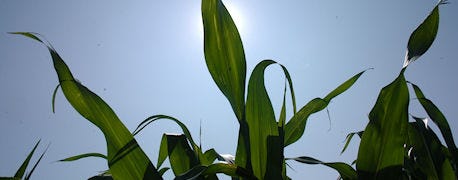July 16, 2012

South Dakota State University scientists say they have documented that modern farming practices measurably increase the yield potential of the soil and capture carbon in the environment. The result, they conclude is a cleaner, more economically vibrant environment.
They studied more than 95,000 soil samples collected from fields across eastern and central South Dakota between 1985 and 2010.

Corn is a carbon sink, says South Dakota scientists. Since 1985, the cropland acres in South Dakota alone have sequestered as much carbon as emitted by 17.8 billion gallons of gasoline.
The study specifically determined the South Dakota surface carbon sequestration potential and associated partial carbon footprint for corn-based ethanol production. Findings support the theory that many of the surface soils in the region became carbon sinks when seeded with corn says David Clay, SDSU plant science and one of the lead researchers on the project.
Carbon sinks are natural or artificial reservoirs that accumulate and store some carbon-containing chemical compound for an indefinite period. The process by which carbon sinks remove carbon dioxide from the atmosphere is known as carbon sequestration.
"The soil organic carbon contents in surface soils have increased 24%," Clay says. "These increases directly boost the soil's yield potential, while reducing agricultural impact on the environment."
Corn yields in 2010 are 60% higher than in 1985, soybean yields are 19% higher, and wheat yields are 53% higher. These yield increases have resulted in more than $2 billion in addition corn, soybean and wheat sales.
Over this time period, no-till adoption has also increased. In central South Dakota, no-tillage adoption increased from 5% in 1986 to 73% in 2009. During the same time, clean tillage decreased from 25% in 1985 to 1% in 2008.
"The carbon stored in South Dakota's 12 million acres of cropped land over this 25 year study period is equal to the carbon emitted from 17.8 billion gallons of gasoline," says Gregg Carlson, SDSU professor of plant science, who was also involved in the study.
Prior to 1984 South Dakota's surface soil organic carbon levels had declined about 60% compared to original values when the land was homesteaded.
Funding for the research was provided by the South Dakota Corn Utilization Council, the South Dakota Soybean Research and Promotion Council, Monsanto, the Agricultural Experiment Station in the College of Agriculture and Biological Sciences at South Dakota State University, the United States Department of Agriculture, and the National Aeronautical Space Administration.
Source: SDSU
You May Also Like




